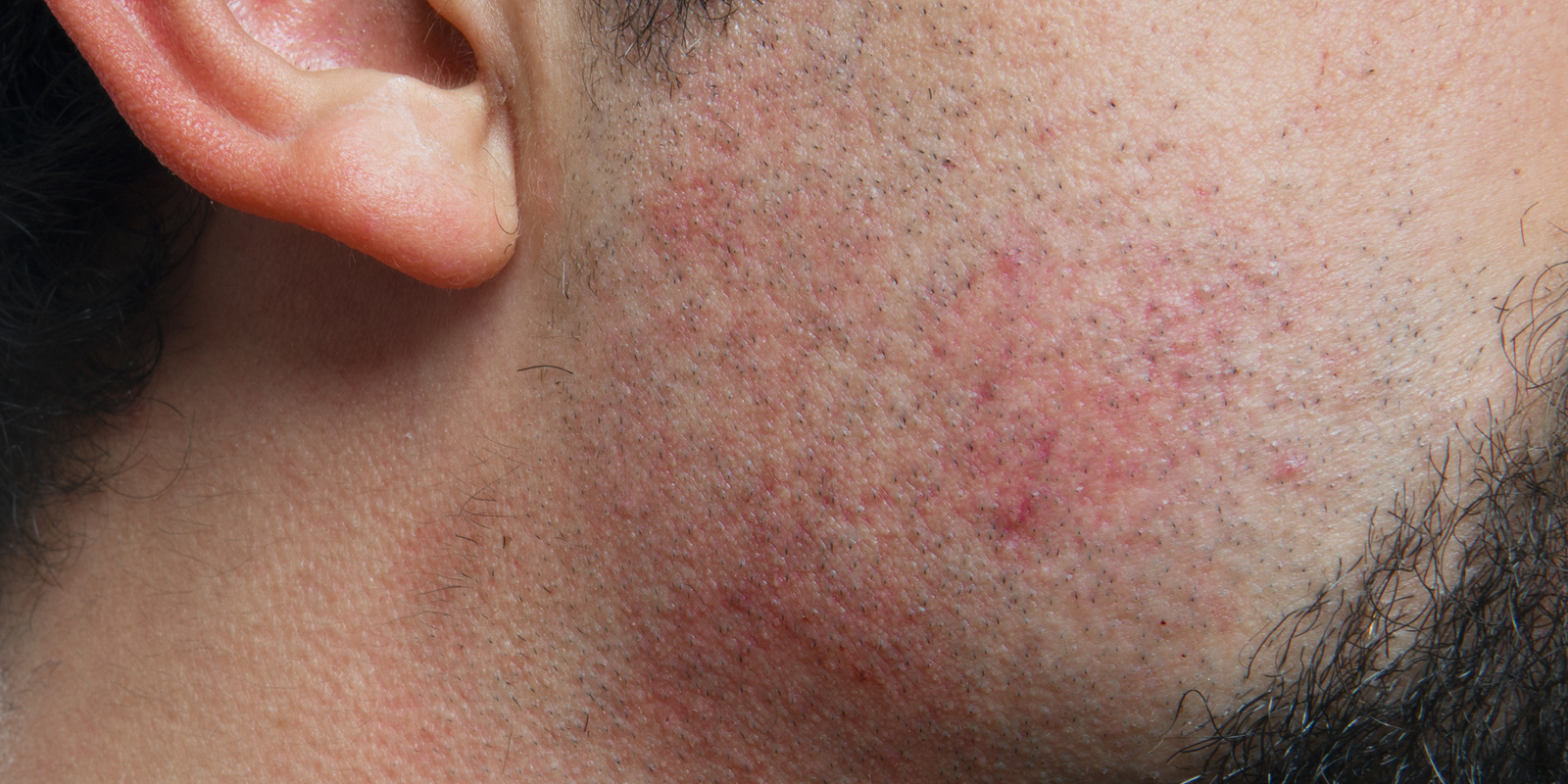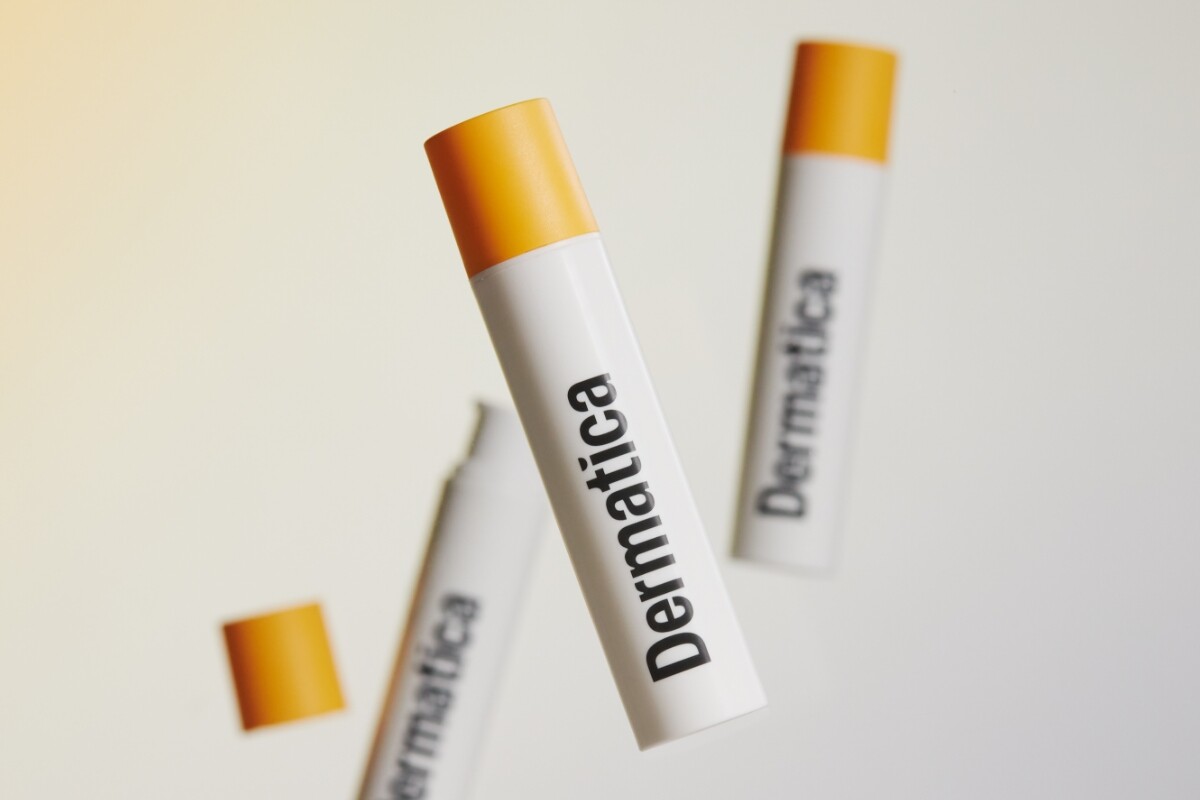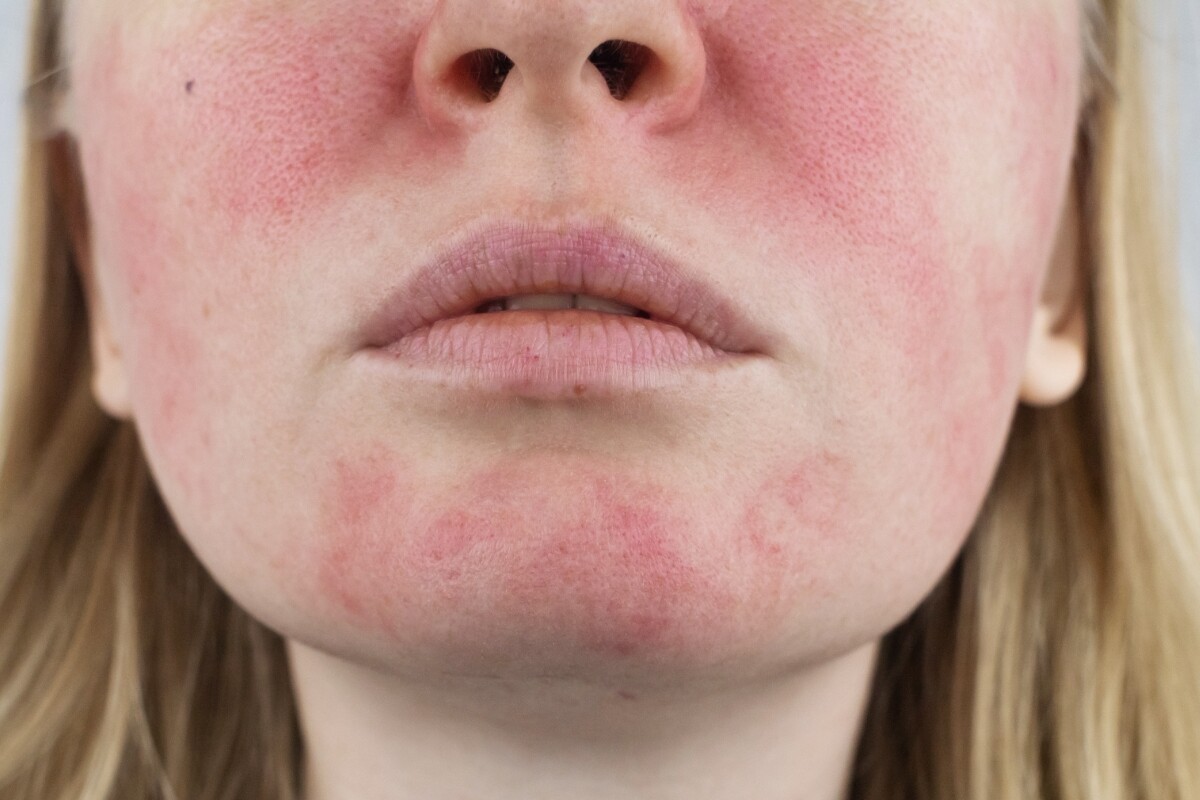Painful bumps on your face after shaving? You may be experiencing pseudofolliculitis barbae (PFB), sometimes referred to as razor bumps. It’s a common problem for many men, especially those with thick or curly facial hair.
It’s frustrating, and although in some cases it can be mild, in other people it may be more severe and hard to treat and can even lead to long-term scarring (1). The good news is there are simple steps you can take to prevent and manage symptoms.
What causes Pseudofolliculitis Barbae?
PFB is caused by hairs growing back into the skin after a close shave. Emerging sharp-tipped hairs grow downwards into, or parallel to, the skin, and this can lead to inflammation around the hair follicle (folliculitis) and red, painful bumps (2). Bacteria that lives on our skin can also grow at these sites of inflammation, causing further redness and whiteheads (3).
PFB is most common in people with black or afro-Caribbean skin and curly hair, as the hair tends to curl back into the skin more easily following shaving. It’s now understood that certain genes related to hair follicles significantly increase your risk of developing symptoms (4).
What does pseudofolliculitis barbae look like?
The symptoms of PFB include red, painful bumps on the skin, which can be accompanied by itching or a burning sensation. In severe cases, PFB can also cause scarring or hyperpigmentation, where darker areas of skin exist where inflammation has occurred. One common condition that can initially seem similar is razor burn, though the red marks from this will usually fade in 24 to 48 hours (5).
Due to the appearance of red spots and white heads, it can also be confused with acne, although this will usually affect areas of the face, neck, and shoulders where hair is not growing. Acne is caused by a clogging of pores, rather than problems of hair growth, and they therefore have different causes and require different treatment approaches.
Finally, symptoms of pseudofolliculitis barbae can be a sign of other infections of the skin, and therefore it’s important to see your doctor if you have any new painful or worsening symptoms that we’ve described here.
Tips for Shaving
The best way to prevent razor bumps is to alter your shaving routine. Here are some simple steps you can take:
1. Use a sharp razor: A dull razor can cause more irritation to your skin, so it’s important to use a sharp razor to minimize the chance of razor bumps.
2. Soften your beard: Take a warm shower or apply a warm towel to your face before shaving to help soften your beard. This will make it easier to shave and help prevent ingrown hairs.
3. Use shaving cream: Apply a shaving cream or gel to your beard before shaving to help lubricate your skin and prevent razor burn. Definitely avoid dry shaving!
4. Shave in the direction of hair growth: Shaving against the grain can cause hairs to grow back into the skin, so it’s important to shave in the direction of hair growth.
5. Use an electric razor: These often allow you to set a length. Going for 0.5-1mm will allow a close shave, while preventing the short, sharp hairs that are most likely to lead to symptoms.
6. Don’t stretch your skin: Stretching your skin while shaving can cause hairs to recoil back into the skin, so it’s best to avoid this.
7. Moisturize: After shaving, apply a moisturizer to your face to help soothe any irritation and keep your skin hydrated.
8. Shave regularly: although it may seem tempting to avoid shaving as much as possible, if you do choose to shave, it’s best to aim to do so daily (6).
Finally, you might find it useful to remove hair with a depilatory cream (a product that dissolves hair). These are helpful for avoiding ingrown hairs, but many find the chemicals in these products to be irritating themselves (7).
What Can You Do to Treat Pseudofolliculitis Barbae?
If you already have razor bumps, don’t worry! There are treatment options available. Here are some ways you can treat razor bumps:
1. Topical antibiotics: If you have an infection, your dermatologist may prescribe a topical antibiotic to help clear it up.
2. Laser hair removal: If you’re prone to razor bumps, you may want to consider laser hair removal. This procedure can help remove hair permanently, which can prevent razor bumps from occurring. However, it can cause increased pigmentation, especially in darker skin.
In Conclusion
Pseudofolliculitis barbae can be a frustrating and painful condition, but there are simple steps you can take to prevent it. By altering your shaving routine and taking care of your skin, you can reduce your risk of developing razor bumps. And if you do develop razor bumps, there are treatment options available to help alleviate your symptoms. So, don’t let razor bumps get in the way of your beard goals – take action today!
References:
1. British Association of Dermatologists. Pseudofolliculitis [Internet]. 2021 Dec [Cited April 2023]. Available from: https://www.bad.org.uk/pils/pseudofolliculitis/
2. Ogunbiyi A. Pseudofolliculitis barbae; current treatment options. Clin Cosmet Investig Dermatol. 2019 Apr; 12:241-247.
3. DermNet NZ. Bacteria in acne. [Internet]. 2014 Apr [Cited June 2023]. Available from: https://dermnetnz.org/topics/bacteria-in-acne.
4. Winter H. et al. An unusual Ala12Thr polymorphism in the 1A alpha-helical segment of the companion layer-specific keratin K6hf: evidence for a risk factor in the etiology of the common hair disorder pseudofolliculitis barbae. J Invest Dermatol. 2004 Mar; 122(3): 652-7.
5. Ogunbiyi, A., Pseudofolliculitis barbae; current treatment options. Clin Cosmet Investig Dermatol. 2019 Apr; 12: 241–247.
6. Gray J. & McMichael A.J. Pseudofolliculitis barbae: understanding the condition and the role of facial grooming. Int J Cosmet Sci. 2016 Jun; 28 Suppl.1:24-7.
7. British Association of Dermatologists. Pseudofolliculitis [Internet]. 2021 Dec [Cited April 2023]. Available from: https://www.bad.org.uk/pils/pseudofolliculitis/
Dr Catriona Maybury
Dr Catriona Maybury is a Consultant Dermatologist, working as Medical Lead for Dermatica and at St George’s Hospital in London. Catriona completed her specialty training at St John’s Institute of Dermatology in London. Catriona has a special interest in medical dermatology, completing a PhD in liver fibrosis amongst psoriasis patients at King’s College London. Catriona is a certified coach and worked as Dermatology Section Editor for the British Medical Journal.
Related Posts
October 1, 2024
0 Comments12 Minutes





